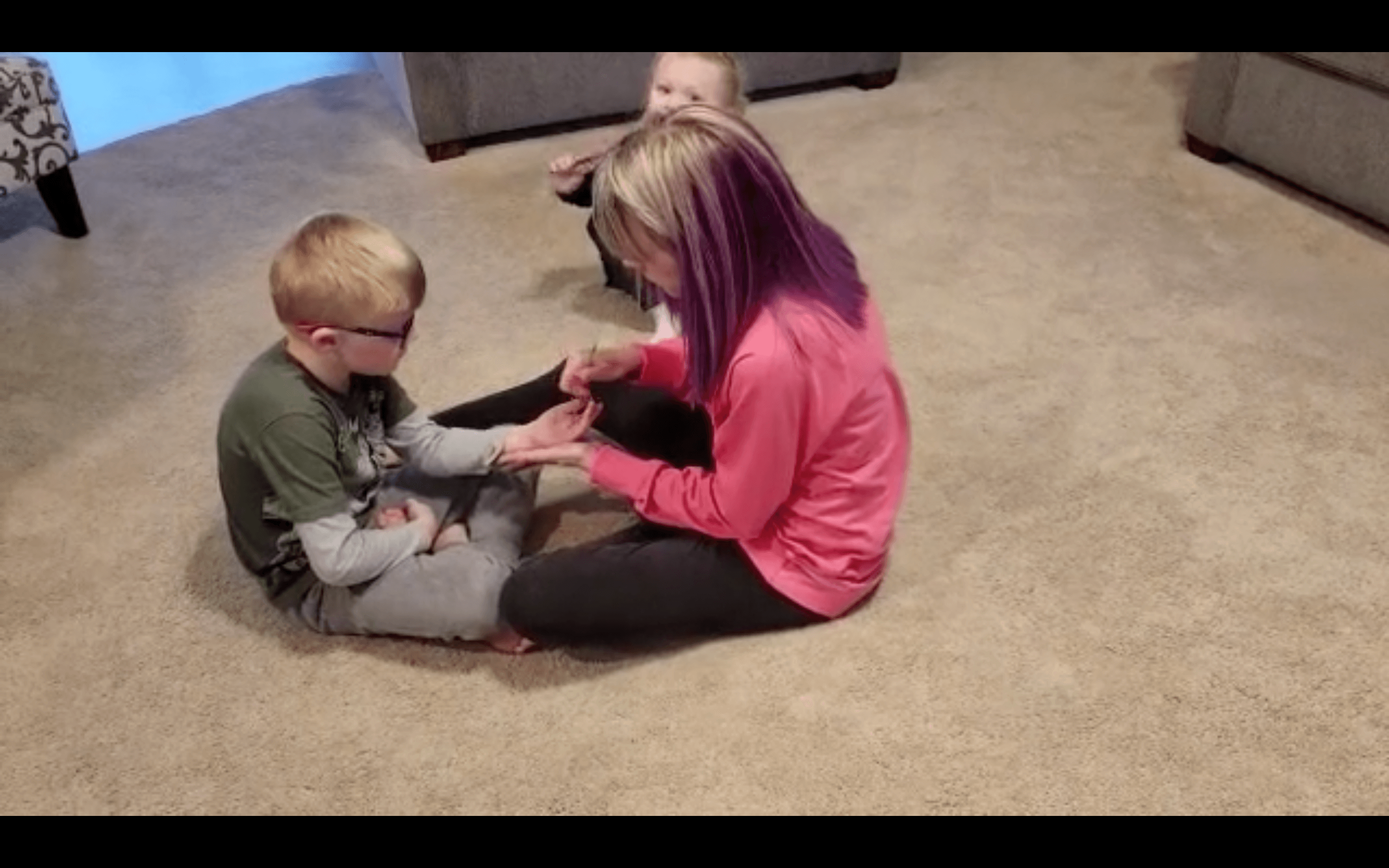Course Menu
-
Introduction
Course Outline
System Development
Understanding Fear Paralysis Reflex
Understanding Moro Reflex
Understanding Rooting Reflex
Understanding Babinski Reflex
Understanding Palmer Reflex
Understanding Spinal Galant Reflex
Understanding Tonic Labyrinthine Reflex (TLR)
Understanding Symmetrical Tonic Neck Reflex (STNR)
Understanding Asymmetrical Tonic Neck Reflex (ATNR)
-
Phase 1 Overview
Rhythmic Movement Training
Rooting Reflex Exercise
Palmar Reflex Exercise
Babinski Reflex Exercise
Spinal Galant Reflex Exercise
Moro Reflex Exercise
Optokinetic Reflex
Astronaut Training Slow
Wilbarger Brushing
Box Breathing
Hand Pulls
Meatball
Smooth Pursuits
Supine Rocking
1/2 Superman
Snow Angel
Balanced Brain ~ Thriving Child
Kim Lowack
Palmer Reflex Exercise Training

Equipment: Stick-end of the paintbrush
alternate tool: end of a knitting needle or crochet hook
Technique: Quick X strokes to the palm such as you would strike a match
Frequency:
- 1-2 x daily
- R brain weakness: 10 quick X strokes on the Right palm and 20 on the Left palm
- L brain weakness: 10 X strokes on the Left palm and 20 on the Right palm
- Global Delay - begin with R brain protocol above (we will discuss when and if you move to the left side)
Active reflex reactions:
- twitch in the hand or fingers
- curling of fingers or thumb toward the palm
- rubbing or scratching the hand during or after brush strokes
- pulling entire arm away
Scoring:
- 4: more than 75% of strokes react
- 3: 50-75% react
- 2: 25-50% react
- 1: less than 25% react
- 0: zero reaction to strokes = INTEGRATION
Integration has occurred when you get zero reactions during all brush strokes
Active Reflex
